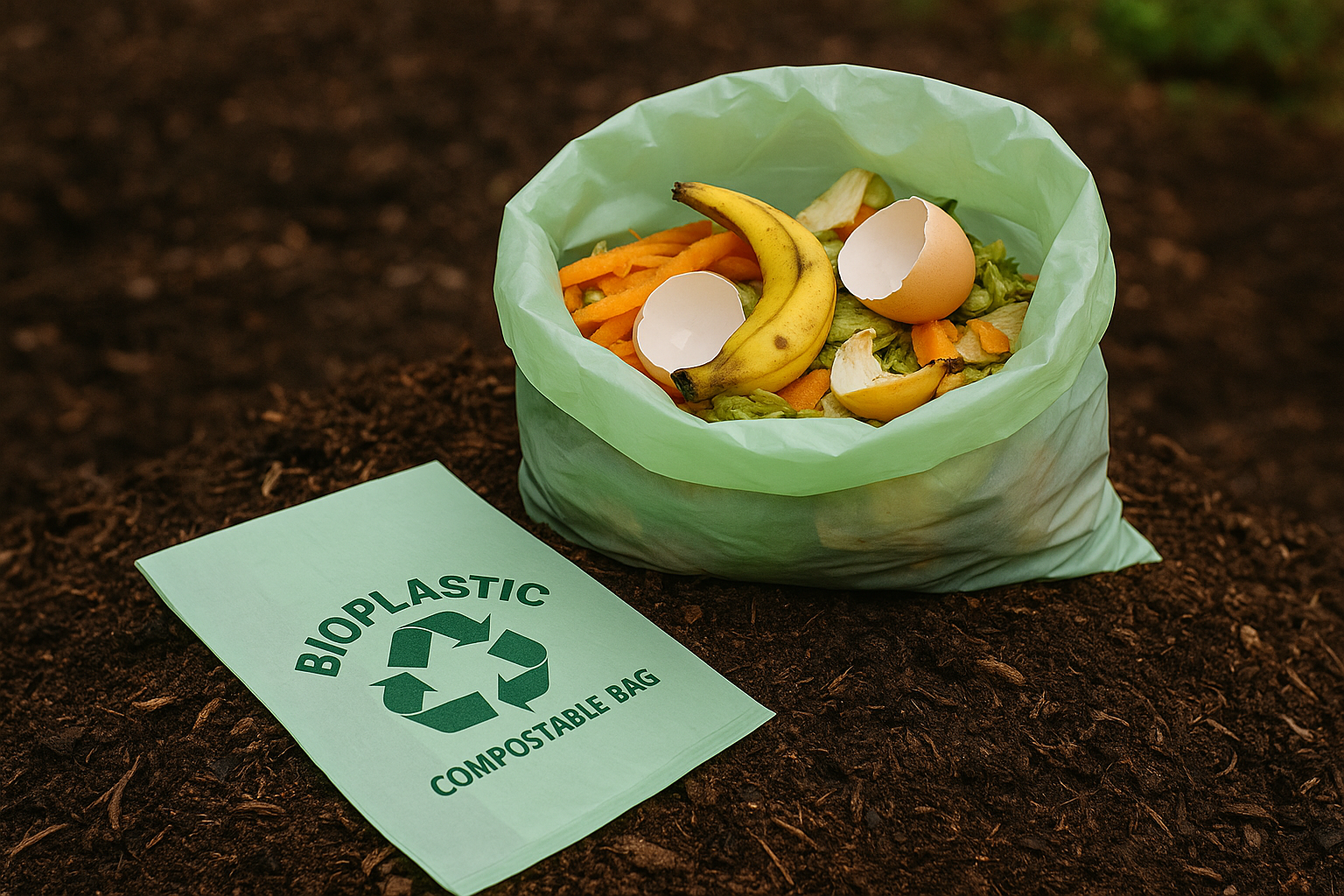In recent years, bioplastics have been marketed as a greener alternative to conventional plastic—especially for food waste recycling. These bags, often labeled compostable or plant-based, seem like the perfect solution: strong enough to hold scraps, and supposedly able to break down into harmless organic matter.
But here’s the inconvenient truth: bioplastic bags aren’t as good for the environment as you might think—and they can actually interfere with proper composting. Let’s dig into why.
1. They Often Don’t Break Down Properly
While bioplastics are technically made from natural sources like corn or sugarcane, most of them don’t break down in home compost systems or even standard industrial composting facilities. Many require very specific high-heat, high-humidity environments found in specialized facilities—which most municipal composters don’t have.
As a result, these bags often survive the composting process intact and have to be screened out and sent to landfills. That means more waste, not less.
2. They Confuse Consumers and Composters Alike
Not all bioplastic bags are created equal. Some are labeled “biodegradable,” others say “compostable”—but these terms aren’t regulated consistently. A bag might biodegrade eventually, but that could take years in a landfill (just like regular plastic).
This creates major confusion for consumers who think they’re doing the right thing—and for composting facilities that are left with bags that look like plastic, smell like plastic, and act like plastic in their systems.
3. They Can Contaminate Compost
When bioplastic bags don’t break down properly, they end up as contaminants in finished compost. That’s a big problem. Farmers, gardeners, and landscapers who use compost need it to be clean and plastic-free.
Some composting operations have stopped accepting any kind of bagged food waste, because the risk of contamination is just too high—even from supposedly compostable bioplastics.
4. They Often Rely on Industrial Agriculture
Just because something is made from plants doesn’t make it sustainable. Many bioplastics are made using corn or sugarcane grown in industrial, pesticide-heavy farms. These crops require significant water, fertilizers, and fossil fuels—and often displace food crops or contribute to deforestation.
So while the end product may seem “green,” the supply chain behind it is often far from eco-friendly.
5. There Are Better Alternatives
If you want to line your food scrap bin in a way that actually supports the composting process, try:
- Unlined paper bags – Fully compostable in home and industrial systems.
- Newspaper – Easily available, absorbs moisture, and breaks down completely.
- Certified compostable paper liners – Look for BPI-certified paper, not bioplastic.
These options are simpler, cheaper, and don’t confuse the composting process.
The Bottom Line
Bioplastics may sound like a futuristic, eco-friendly fix—but when it comes to food waste recycling, they create more problems than they solve. From contamination to false composting claims to industrial agriculture, these bags can derail the entire composting effort.
If you’re trying to reduce waste and support healthy compost, ditch the bioplastics and stick to real compostable materials like paper. Your garden—and the planet—will thank you.



